The Best Juicers To Buy Online In Australia
There’s nothing like starting your day with a fresh glass of juice. The right juicer can turn the tedious task of manually juicing ingredients into a quick press of a button and we've listed our top recommendations for juicers to help you do just that.
Best Overall Juicer
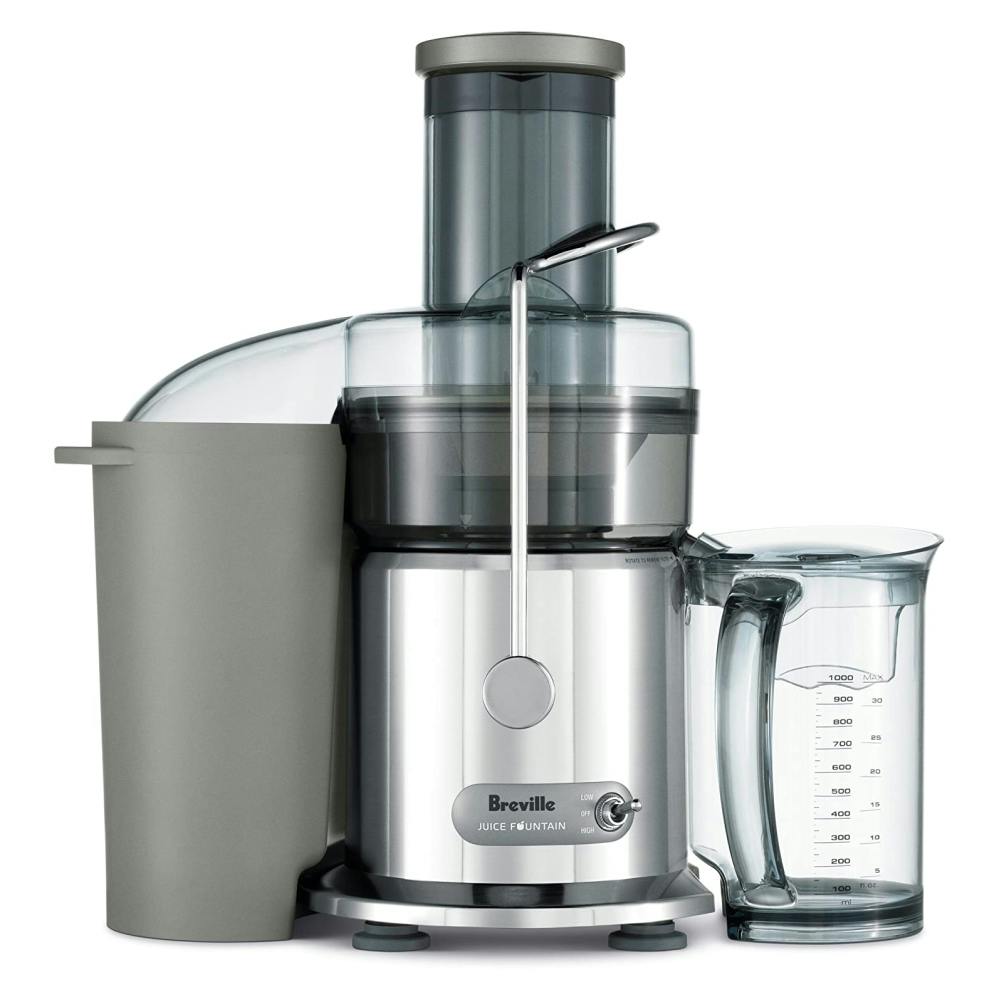
Breville The Juice Fountain Max Juicer
- Comes with a large chute
- Good capacity in both the juice and the dry pulp containers
- 5-year motor warranty and 1-year parts warranty
- It’s very wide, so it takes up a bit of space
The Fountain Max Juices comes with a three-inch wide chute that allows you to fit most fruits and vegetables, as well as a one-litre container on the side that holds all of your juice. You also have an arm that slots in place and acts as a safety lock so the top stays in place while the juicer is working.
Aside from the motor itself, all of the components are dishwasher-safe and easy to clean. You also get a small brush that you can use to scrub the excess food particles off of the sides of the juicer before you pop it into the dishwasher.
The juicer also has a sizable collection basket on the side. This allows it to collect a lot of dried pulp, so you can get a lot of use out of your juicer before you need to empty it and clean it.
Best Budget Juicer
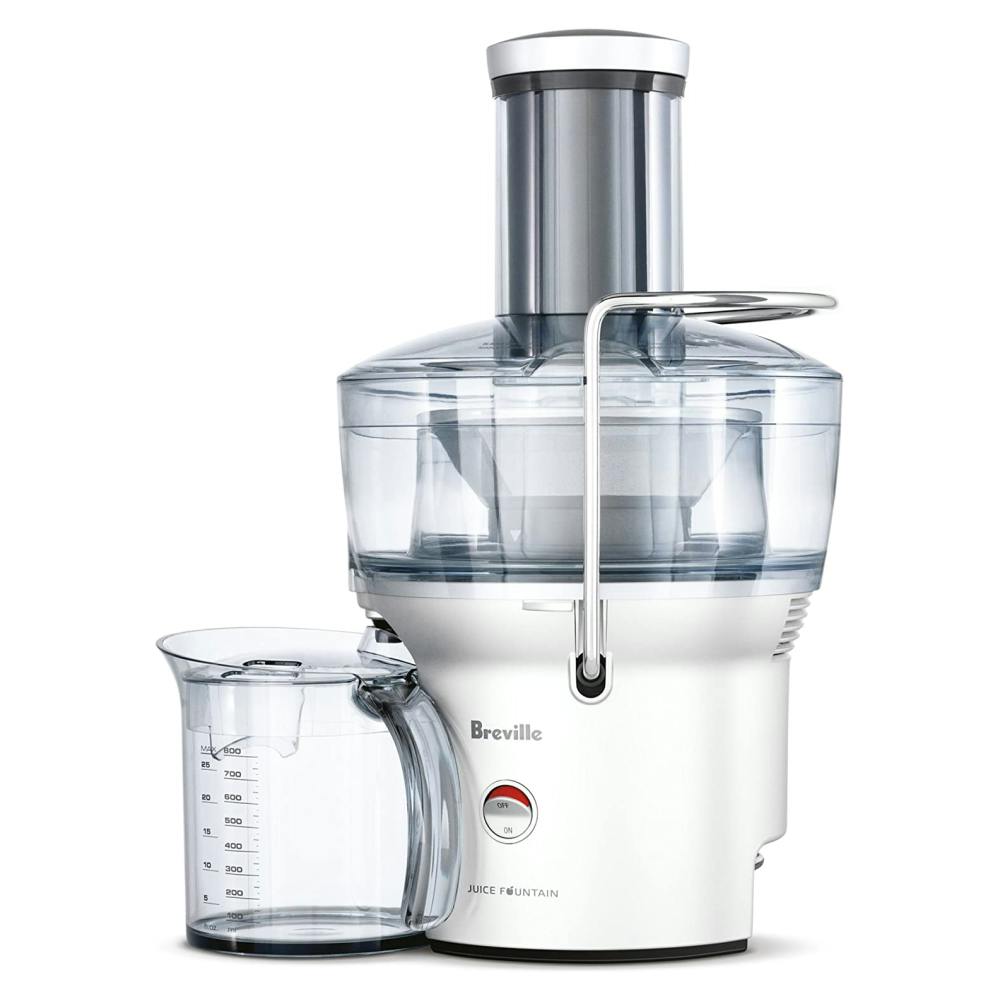
Breville Juice Fountain
- Very simple to use and easy to clean
- Dishwasher-safe
- Heavy grade polymer body and stainless steel cutters
- Only has a singular speed setting
- The warranty only lasts for a single year
Similar to the previous Breville that we mentioned on our list, the Juice Fountain has a three-inch (seven and a half centimetre) wide chute that allows you to fit fruits and vegetables inside without dicing them beforehand. It also has a similar safety lock that holds the top of the juicer in place, and all of these components are also dishwasher-safe.
The fine mesh filter in the centre of the juicer is incredibly easy to remove and clean, and all of the pulp that’s leftover gets collected in the wide circular container around the chute. That gives the juicer the fountain-like appearance that it was named after.
The juice mug that this device comes with has a capacity of 800 ML and comes with a detachable lid that shows you where to place it. That’d be below the opening of the juicer so that it’s directly next to the sprout the juice comes out of.
Best Cold Press Juicer
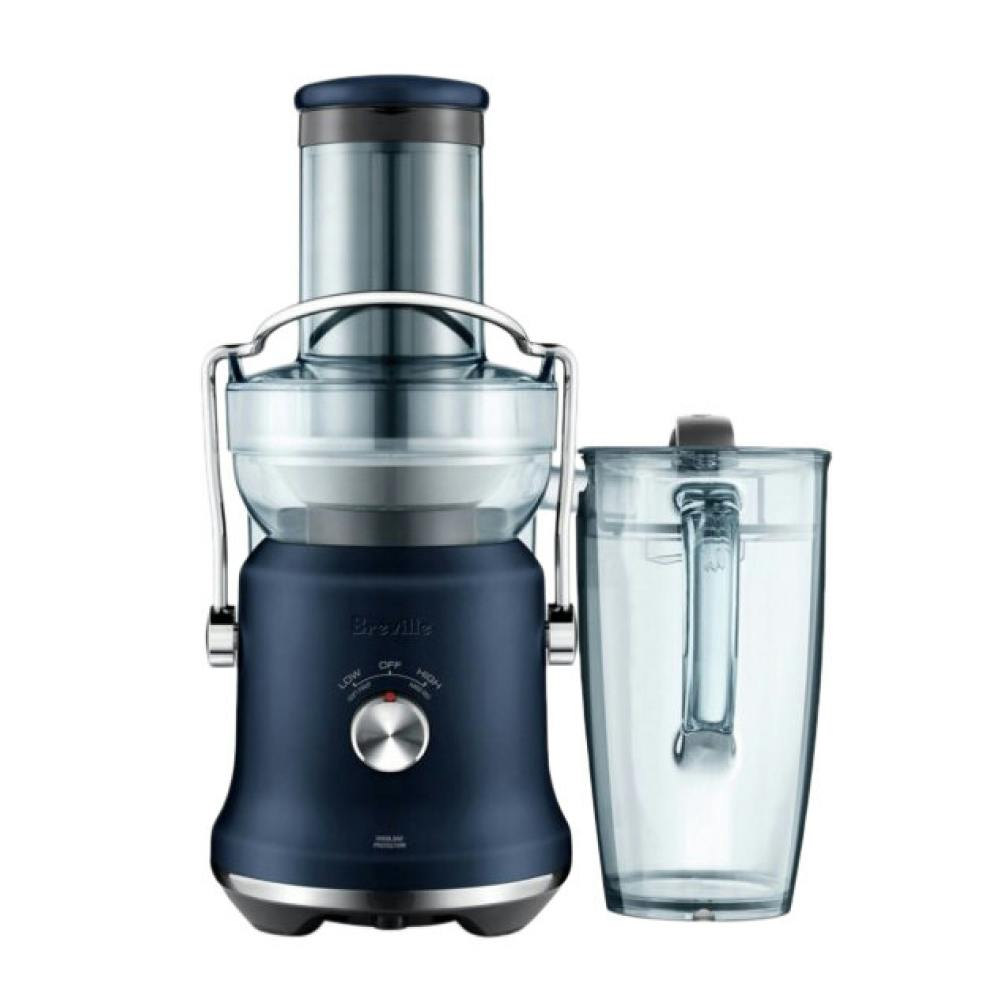
Breville the Juice Fountain Cold Plus Juicer
- A temperature increase of less than 1°C
- Very compact
- 5-year motor warranty and 1-year repair warranty
- The pulp container is behind the juicer so it’s slightly harder to reach and empty
This is the third juicer we’ve mentioned with a three-inch wide chute, so you might think this is a pretty common feature a lot of juicers share. The truth is that most juicers don’t have that much space, and the only reason these three have such similar dimensions is that they’re all Breville products.
The juicer comes with a safety latch and a juice jug that holds a staggering two litres of liquid, making it around half the size of the juicer itself. Speaking of proportions, the juicer has a very slim design and takes up virtually no space on the counter whatsoever. It’s also pretty quiet and incredibly easy to use.
Since this juicer uses cold press technology, that means that the juice itself won’t come out lukewarm as a result of the juicing process.
Best Heavy-Duty juicer
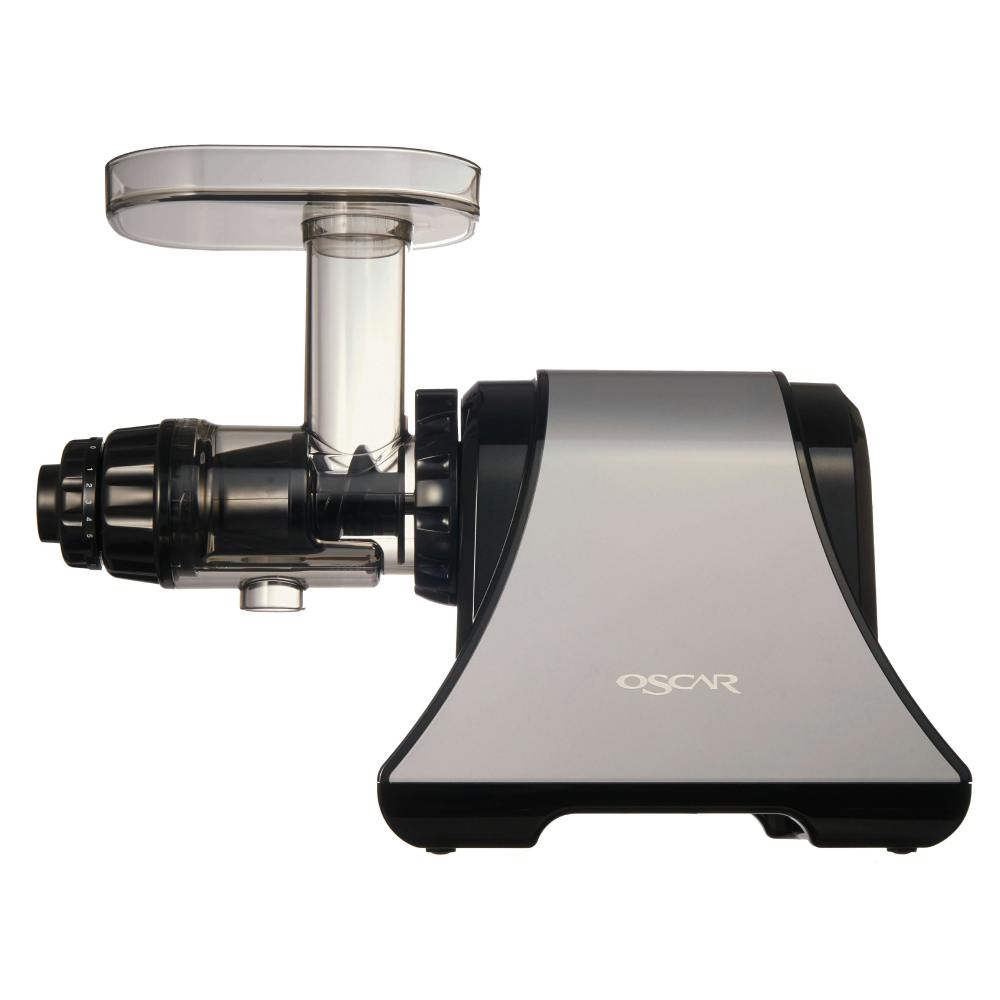
Oscar Neo Plus DA 1200 Ultem Tough Juicer
- Decent 1 L juice capacity
- Comes with a lot of accessories
- 20-year motor warranty and 10-year parts warranty
- It’s a lot slower than regular juicers
- The chute is a bit narrow
Unlike most standard juicers, this particular model comes with the motor on the side rather than under the juicer and pulp collector. This layout allows the juicer to have a bit more power thanks to the larger motor and makes it much easier to get through any veggies that you toss into the chute. Speaking of, the chute is located just above the two plastic containers, one of which is for the pulp and the other for the juice itself.
This juicer is slightly slower than the other models, but it makes up for it by more thoroughly squeezing out all of the juice from the fruit/vegetables, thanks to its strong crushing extraction process.
You also have a mincing attachment that you can use in place of the pulp extractor. That will allow you to create nut butter or sorbet by crushing nuts and frozen fruit. This essentially means that the Oscar Neo can also work as a food processor for certain meals.
Best Premium Juicer
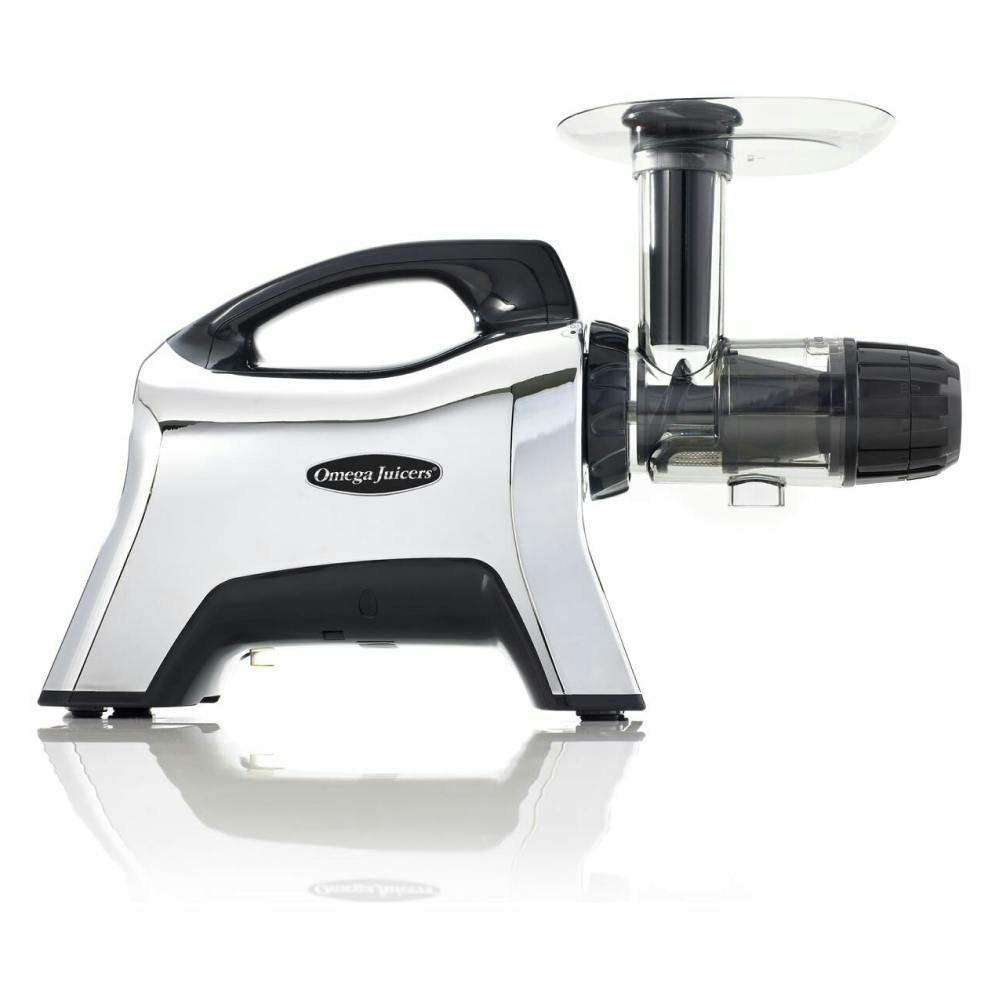
Omega Juicers Cold Pressed Juicer
- Doubles as a food processor
- You get a lot more of the juice from your veggies than a standard juicer can manage
- 20-year warranty
- It’s pretty heavy and it takes up a lot of counter space
Similar to the previous entry on our list, the slower speed at which the Omega Cold Pressed Juicer operates allows it to more thoroughly squeeze out all of the juice from the fruit or veggies inside. This makes it great for vegetables like celery and fruits like carrots, which normal juicers don’t usually get a lot of juice out of by simply cutting them.
Simply put, the crushing process produces a very high juice yield while also ensuring that the pulp comes out as dry as possible. As you’d assume, cleaning up is a lot easier. The juicer also maintains the temperature of the juice at the same level as the ingredients, which ensures that the juice doesn’t get too warm and spoil too soon.
This model also comes with a cleaning brush, six different food processor nozzles, a container for both the juice and the pulp, and several other useful items as well.
Best Juicer Brands
Breville produces very solid juicers. As we mentioned in our article, a lot of their juicer models come with relatively large chutes, an easy-to-use safety feature that keeps the lid in place when the juicer is on, and several useful features and attachments as well.
Their juicers are very well made, which is exactly what you’d expect from a giant on the appliance field like Breville, but they’re also very well priced as well, which makes them a great option for most people when they’re trying to pick out a juicer.
How To Choose The Right Juicer
Masticating or Centrifugal Juicer?
Masticating juicers are also called cold-press juicers, and they use a large corkscrew-like attachment that slowly turns and masticates (chews) the food before squeezing it through a strainer that separates the juice from the pulp.
These juicers are called cold-press because the motor runs at a slower RPM, which means that the inside doesn’t heat up due to the fast motion of the blades, as with centrifugal juicers.
The problem with these juicers is that they’re usually a lot more expensive than centrifugal models, so they’re usually only bought by people who drink fresh juice every day and want to get the most out of the ingredients they use. This juicing process is also a lot slower than a standard blender, but it has been known to produce a much better juice yield.
Centrifugal juicers are much quicker than the alternatives and, generally, a lot easier to disassemble and clean. They use blades that spin at an incredible rate to finely mince the ingredients inside and then drain them through a filter to produce juice.
This juicing process infuses a lot more oxygen into the liquid, which leads to the juice spoiling a lot more quickly. It’s also not the best option for most types of vegetables and heats up the juice due to the rapid movement of the blades.
Both types of juicers have their strengths and weaknesses, so the best juicers for you will mostly depend on your exact requirements.
Which Juicer Retains the Most Nutrients?
Masticating juicers are, without a doubt, the answer here. As we explained before, the juicing process that these models implement squeezes a lot more juice out of the fruits and vegetables placed into the chute, thereby retaining most of the nutrients.
Keep in mind that we’re not saying that centrifugal juicers waste a lot of the nutrients that are present in fruits and vegetables, but rather that the other models are simply slightly better at collecting them.
The most significant difference is with harder vegetables like carrots, spinach, or kale, which don’t really contain a lot of juice, so the crushing process is much more effective at extracting than cutting, which the centrifugal juicers do.
How to Clean a Juicer
The first thing you want to do is scoop up all of the pulp left on the inside after using the juicer. Use an ordinary spoon, preferably a wooden one, since there’s less chance of it scratching the inside of the container, and use it to tip all of the leftovers into the trash can or into a plastic bag that you can throw away.
We don’t really do anything with the pulp other than throwing it away, but if you’re interested in using every part of the fruits and vegetables, then there are a lot of ways that you can use the leftover pulp to make things like biscuits, pesto, and even certain baked goods.
After you’ve cleaned out the pulp container, detach the lid and chute from the juicer, and remove the filter. Depending on what sort of model you own and how sturdy the components are, you’ll either place the juicer components in a dishwasher or hand-wash them to get rid of any food particles.
And we finally get to the base of the juicer where the motor is located. Since you can’t put this under a tap or in a dishwasher, get a sponge, clean the outside, and get rid of any juice stains.
